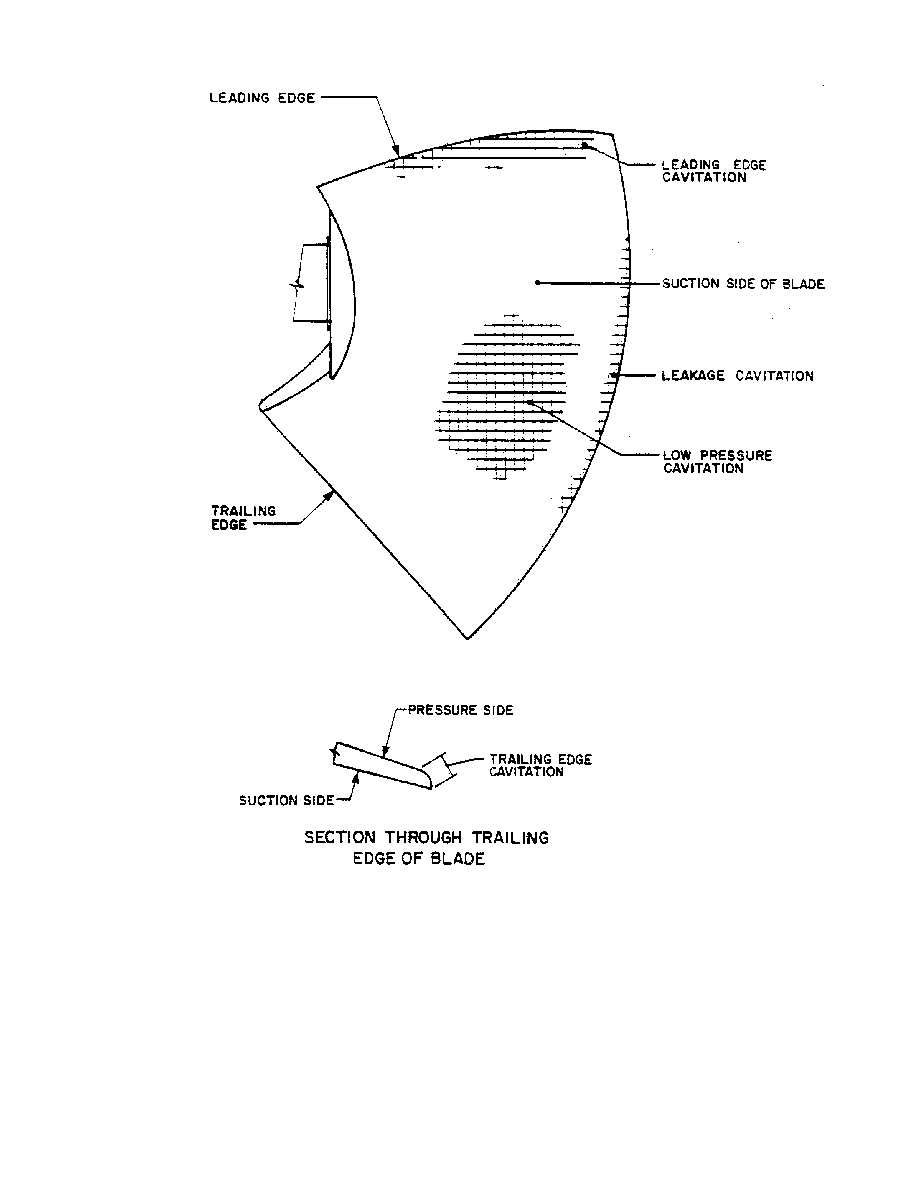

4.5
"DECISION ON BEST APPROACH TO REPAIRS
"After inspecting and assessing the cause of damage, a plan on the best
approach for cavitation repairs must be developed.
approach for cavitation repairs must be developed.
"The first decision which must be made is whether to complete repairs during
the current outage or to delay repairs for a future inspection period. This will
depend on the plant owner's normal frequency of inspection and repair, and the
actual extent of damage which is experienced. Repairs should not be delayed
if:
the current outage or to delay repairs for a future inspection period. This will
depend on the plant owner's normal frequency of inspection and repair, and the
actual extent of damage which is experienced. Repairs should not be delayed
if:
Further delay will result in added repair costs because of the
accelerating rate of cavitation pitting.
accelerating rate of cavitation pitting.
Damage is approaching 20 percent of blade thickness or 1/2 inch in
depth, whichever is less.
depth, whichever is less.
Welders must be mobilized for other work on the runner such as crack
repair.
repair.
"Often, the outage time needed to complete the repairs will influence the
decision on whether or not to make repairs. The demand to return the unit to
service in as short a time as possible may make it possible to repair only areas
of severe damage, leaving areas of frosting and minimal damage for the next
inspection outage. Temporary repairs may also be made using non-fused
materials.
decision on whether or not to make repairs. The demand to return the unit to
service in as short a time as possible may make it possible to repair only areas
of severe damage, leaving areas of frosting and minimal damage for the next
inspection outage. Temporary repairs may also be made using non-fused
materials.
"Even if it is decided to postpone repairs, local discontinuities upstream of the
area of damage should be blended smooth by grinding to reduce the rate of
further pitting.
area of damage should be blended smooth by grinding to reduce the rate of
further pitting.
"When the decision is reached to proceed with cavitation pitting repairs, it is
necessary to determine the method to be used for repairs and whether or not
blade profile corrections should be made. The various methods for undertaking
repairs include:
necessary to determine the method to be used for repairs and whether or not
blade profile corrections should be made. The various methods for undertaking
repairs include:
Fill damaged area with weld material
Fill damaged area with non-fused materials
Weld plates over the damaged area
Remove damaged section and replace with new forced plates welded in
place
Fill damaged area with non-fused materials
Weld plates over the damaged area
Remove damaged section and replace with new forced plates welded in
place
11